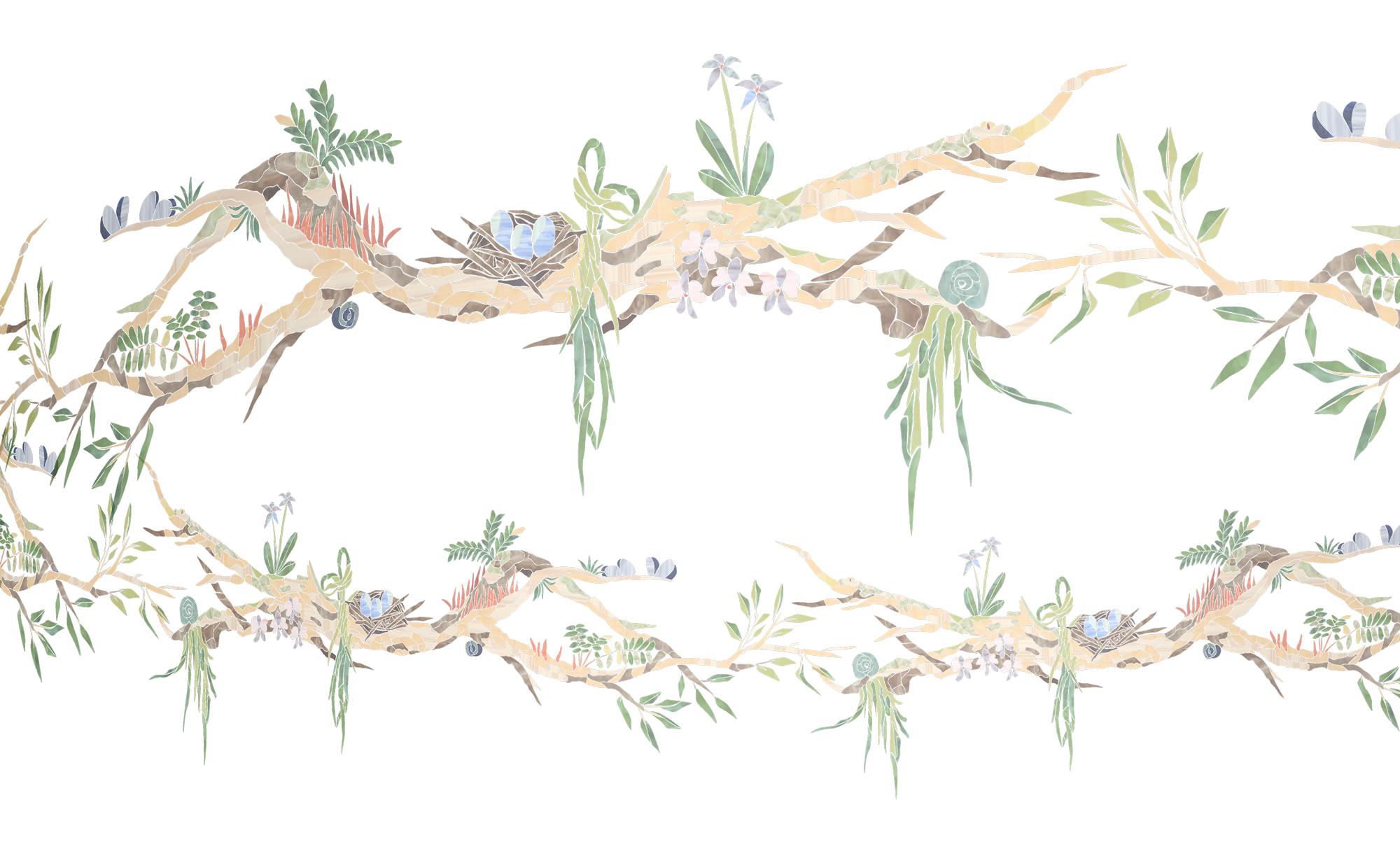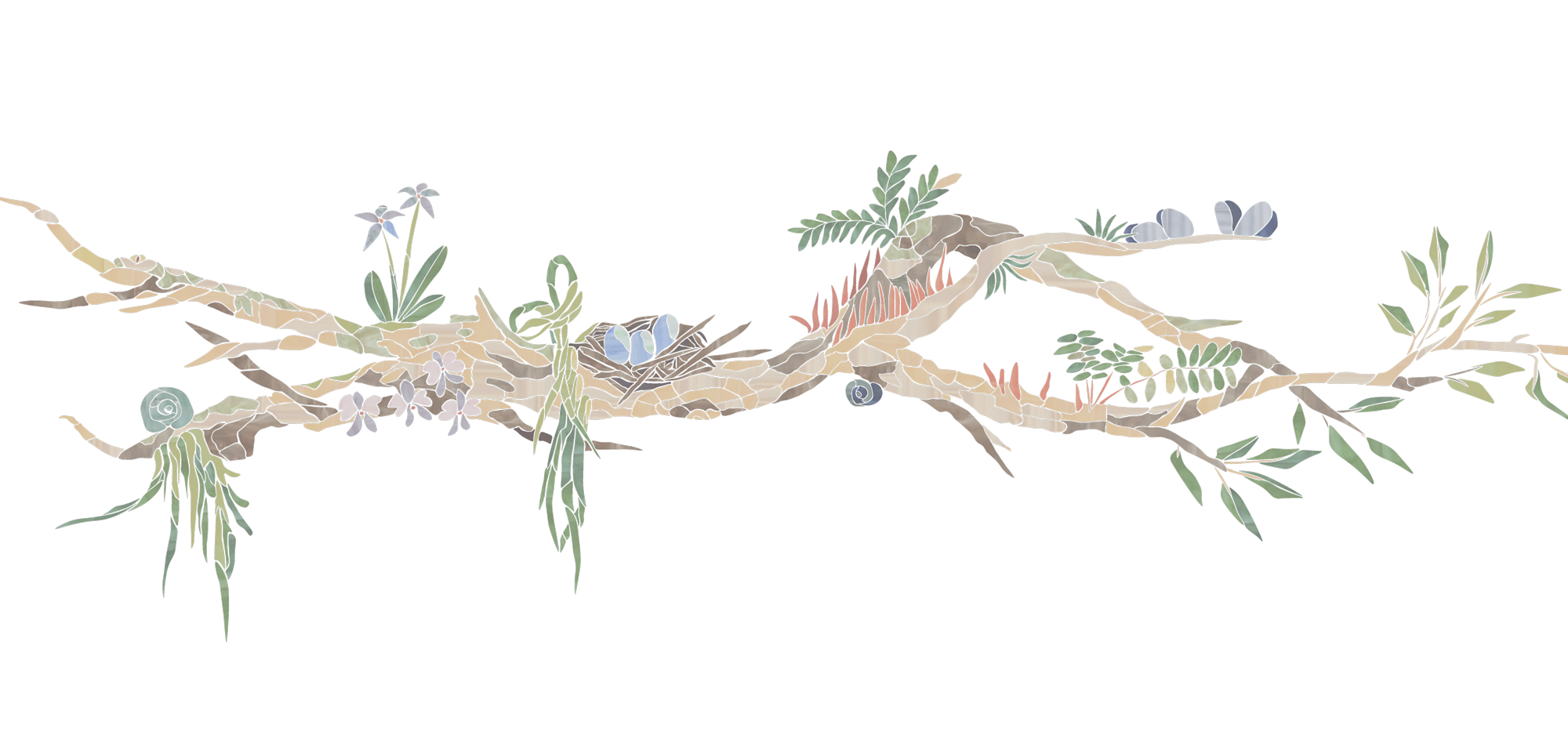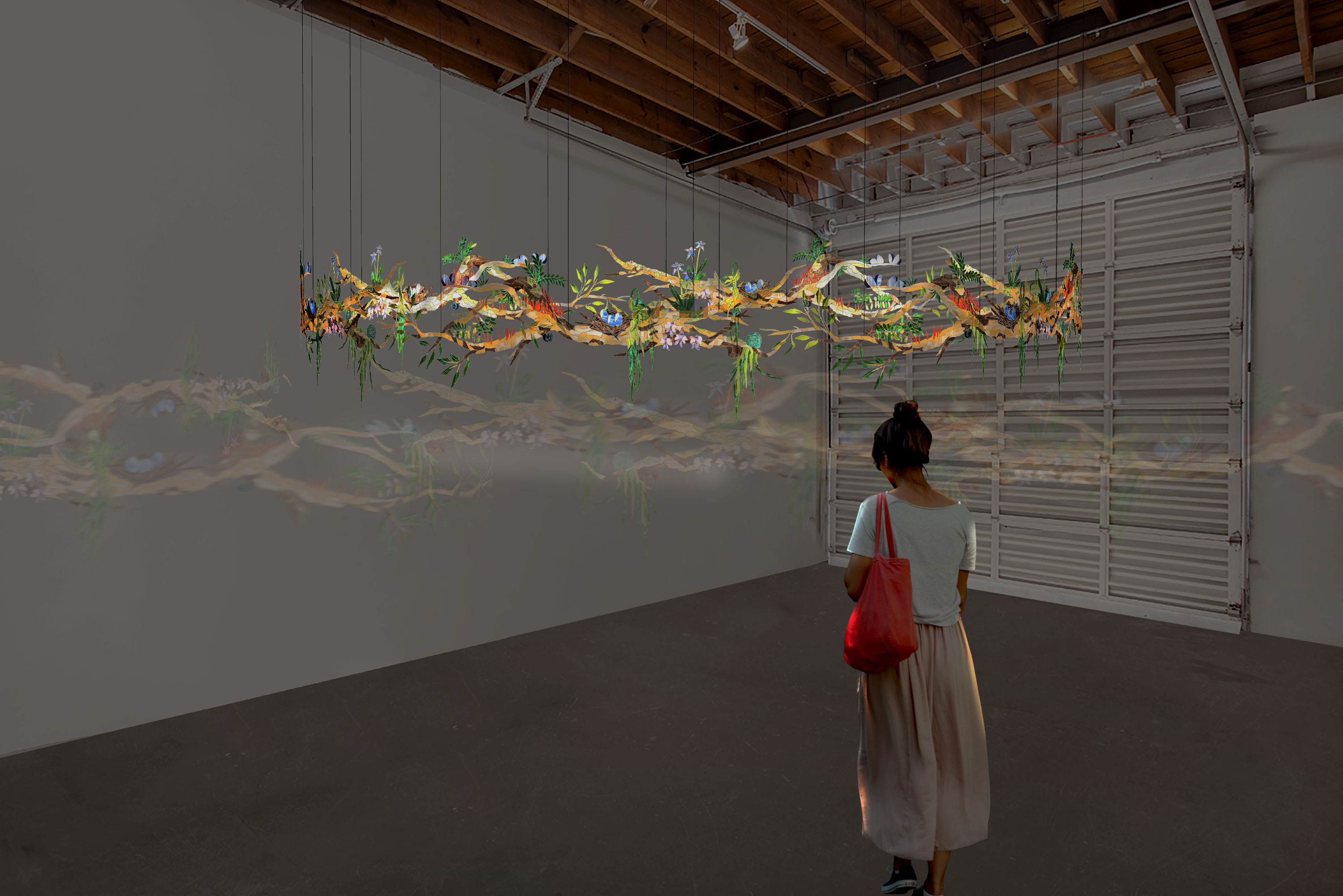

Cordy
Resurrection Fern (IN PROCESS)
Resurrection Ferns (Pleopeltis polypodioides) are a species of epiphytic fern common throughout the southeast, a plant I vividly remember seeing on hikes when I would visit my grandparents near Daytona Beach. My grandmother taught me about how, in droughts, the plant can lose almost all of its water, and shrivel up into a lifeless mass, only to burst back greener than ever as soon as the next rain comes. It’s been estimated that the ferns could survive 100 years without water, and would still resurrect after a single rainstorm.
In Staying with the Trouble, Making Kin in the Chthulucene, Donna Haraway writes that our mission on Earth should be to limit the scale of the anthropocene to be just a transition period. It is not the new geological era. It is the period between the holocene and the ecozoic epoch to come. As we witness the sixth mass extinction play out at an accelerated pace, species like the resurrection fern inspire hope for what blooms again after adversity and crisis. My installation proposes illustrating this cycle of life, decay, and renewal, as a stained glass sculpture that would be suspended overhead from the ceiling. Lit internally, the sculpture would refract colored shadows onto the walls and viewers in the room. Designed in consultation with my brother, Jake Pivnik, a photonics and optics engineer, the custom-built LED light system would respond to a soundscape that further immerses viewers in a chorus of pulsing light, and harmonized field-recordings.
The circular installation will be constructed in 6 individual curved parts, each module depicting a branch covered in mosses, orchids, bromeliads, ferns, and small animals, across a timespan defined by drought and flood. Displayed as a circle, time folds back into itself, as the panoramic sculpture tells a transition story of death, diapause, and decay, becoming lush renewal, over and over again.
Resurrection Ferns (Pleopeltis polypodioides) are a species of epiphytic fern common throughout the southeast, a plant I vividly remember seeing on hikes when I would visit my grandparents near Daytona Beach. My grandmother taught me about how, in droughts, the plant can lose almost all of its water, and shrivel up into a lifeless mass, only to burst back greener than ever as soon as the next rain comes. It’s been estimated that the ferns could survive 100 years without water, and would still resurrect after a single rainstorm.
In Staying with the Trouble, Making Kin in the Chthulucene, Donna Haraway writes that our mission on Earth should be to limit the scale of the anthropocene to be just a transition period. It is not the new geological era. It is the period between the holocene and the ecozoic epoch to come. As we witness the sixth mass extinction play out at an accelerated pace, species like the resurrection fern inspire hope for what blooms again after adversity and crisis. My installation proposes illustrating this cycle of life, decay, and renewal, as a stained glass sculpture that would be suspended overhead from the ceiling. Lit internally, the sculpture would refract colored shadows onto the walls and viewers in the room. Designed in consultation with my brother, Jake Pivnik, a photonics and optics engineer, the custom-built LED light system would respond to a soundscape that further immerses viewers in a chorus of pulsing light, and harmonized field-recordings.
The circular installation will be constructed in 6 individual curved parts, each module depicting a branch covered in mosses, orchids, bromeliads, ferns, and small animals, across a timespan defined by drought and flood. Displayed as a circle, time folds back into itself, as the panoramic sculpture tells a transition story of death, diapause, and decay, becoming lush renewal, over and over again.




